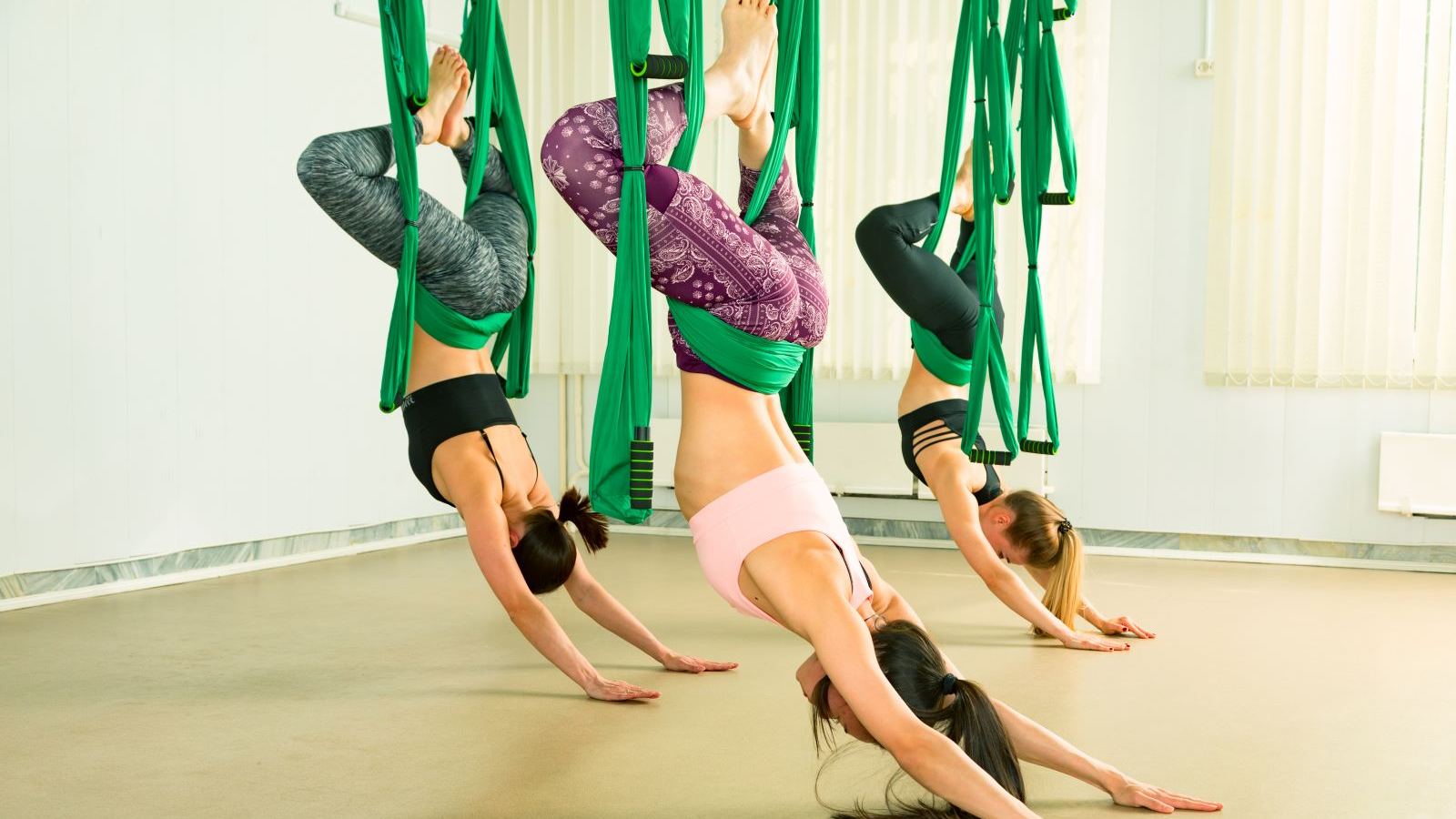Find relief from daily tension with these gentle aerial yoga poses. Check out some basic poses to start with.
Stress has become a bothersome partner in our hectic lives. Be it demanding job duties, tight schedules or family issues, there is always something that makes our lives stressful. Relaxation techniques like meditation, and journaling can help to reduce stress. If you want an alternative, try aerial yoga for stress relief and better mental health. This fun and beautiful yoga technique uses a silky hammock from which you suspend yourself in mid-air, taking traditional yoga poses to a new level. It is one of the most effective ways to build strength and improve flexibility, and it is also considered a useful way to keep stress and anxiety at bay. Here are some easy and effective aerial yoga poses for stress reduction.
What is aerial yoga?
Aerial yoga, also known as anti-gravity yoga, is a form of yoga that incorporates the use of a hammock or silk fabric suspended from the ceiling or a sturdy overhead structure. “It combines traditional yoga poses with elements of Pilates, dance, and acrobatics, allowing practitioners to explore new movements and postures not achievable on the ground,” says yoga expert Akhil Gore.

Does aerial yoga help in stress relief?
Yes, aerial yoga is a novel technique for stress treatment that combines physical activity with a feeling of pleasure. The hammock’s support promotes deeper relaxation and the release of tension in tight muscles that frequently store stress. Inversions, a frequent ingredient, can improve blood circulation and relax the nervous system. The gentle swaying and floating sensations provide a sense of weightlessness, which reduces anxiety and promotes contemplative states, as found in a study published in the journal Research in Dance Education. The focus necessary to maintain balance and complete postures draws attention away from unpleasant thoughts.
Deep breathing during aerial yoga promotes calm and lowers cortisol levels. The sensation of being suspended can also provide a sense of protection and security, which promotes emotional well-being. This unique type of exercise can boost body awareness, resulting in a better understanding of physical and mental strain.
Aerial yoga also has a rather fun and exciting element that can also cause the production of endorphins, which are natural mood enhancers. Also, the sense of success that comes with learning new positions can increase confidence and reduce stress.
Aerial yoga for stress reduction: 10 must-try poses
Here are some aerial yoga poses that can help with stress relief:
1. Supported savasana (corpse pose):
- Sit in the hammock, and then gently lay back, allowing the fabric to cradle your entire body.
- Let your arms and legs relax, and close your eyes.
- Focus on your breath, allowing the hammock to provide a sense of security and release tension.
2. Aerial child’s pose:
- Kneel in front of the hammock, and then fold forward, resting your torso inside the fabric.
- Allow the hammock to support your weight, and relax your arms and head.
- Breathe deeply, feeling the stretch in your lower back.

3. Aerial supported inversions:
- With careful instruction, allow the hammock to support your hips as you gently invert.
- Ensure you feel stable and comfortable.
- Hold the pose for a few breaths, and then slowly return to an upright position.
4. Aerial gentle swings:
- Sit comfortably in the hammock.
- Gently sway back and forth, allowing the movement to release tension.
- Close your eyes and focus on the rhythmic motion.
5. Aerial hip openers:
- Using the hammock for support, gently open your hips in various positions, such as butterfly or frog pose variations.
- Allow the hammock to deepen the stretch, and breathe deeply.
6. Aerial supported backbends:
- With the hammock supporting your back, gently arch backwards.
- Ensure the support of the hammock is comfortable.
- Be mindful to not over extend your back.

7. Aerial lunge and twist:
- Using the hammock to help support lunges, and twist the torso while in the lunge position.
- The hammock allows for deeper twisting, and therefore deeper tension release.
8. Aerial seated meditation:
- Sit comfortably within the hammock.
- Allow the hammock to support your posture.
- Practice deep breathing and meditation.
9. Aerial downward-facing dog:
- Using the hammock as a support for the feet, and or hands, perform a downward dog pose.
- The hammock allows for a deeper spinal stretch.
10. Aerial kneeling fetal pose:
- Kneel in front of the hammock, and then fold forward, resting your head inside the fabric.
- Allow the hammock to support your weight, and relax your arms.
- Breathe deeply, and focus on mindfulness.
Are there any side effects of aerial yoga poses?
While aerial yoga is generally safe when practised under the guidance of a trained instructor, some potential side effects include:
- Muscle soreness or strain, especially for beginners or those with pre-existing conditions.
- Dizziness or vertigo, particularly for those with a fear of heights or balance issues.
- Skin irritation or chafing from the fabric, especially in areas of prolonged contact.
- Nausea or discomfort for those prone to motion sickness or inversion.
Make sure you are doing aerial yoga with the help of an expert, especially if you are a beginner.
Related FAQs
Is aerial yoga safe for everyone?
While generally safe, individuals with certain medical conditions, such as glaucoma, high blood pressure, or recent surgeries, should consult their doctor before trying aerial yoga.
How often should I practice aerial yoga for stress relief?
Even one or two sessions a week can provide noticeable stress relief. Regular practice can lead to greater benefits.
#Aerial #yoga #easy #effective #poses #stress #relief




